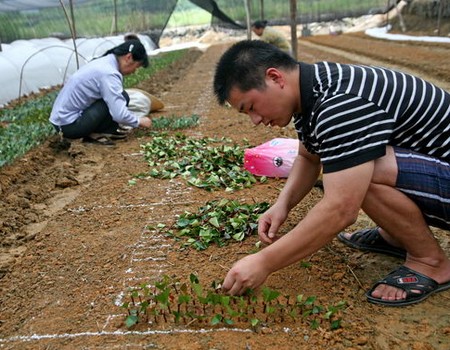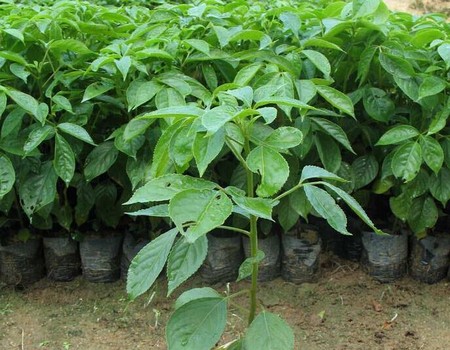Propagation method of Rosa davidiana
Yellow thorn rose is an important ornamental flower in late spring and early summer in the north. When it blossoms, it is golden, a yellow rose, which also refers to the flowers of this plant, which are bright and have a long flowering period. They are suitable for ornamental garden, cluster planting and flower hedge. Yellow thorn rose has a beautiful plant shape, and when the flowers are in full bloom, the golden flowers contrast with the green leaves, which is particularly brilliant and eye-catching. It is an important flowering shrub in spring in the gardens of northern China, growing on lawns and roadsides, and can also be planted as flower hedges.

Rosa przewalskii is usually planted from late March to early April. It needs to be planted with soil balls, and when planting, the compost of 1-2 shovel is applied as the base fertilizer, cut again after planting, watered thoroughly after planting, and then irrigated once every 3 days or so, it can survive. Yellow thorn rose has the advantages of easy cultivation, extensive management and less diseases and insect pests. The division method is mainly used in the reproduction of Rosa davidiana. Because the yellow thorn rose has strong tillering ability and the double species generally do not bear fruit, the method of ramet propagation is simple and rapid, and the survival rate is high.
The main propagation methods of Rosa przewalskii are ramet propagation and grafting propagation. Because the double valve does not bear fruit, only the single valve results, so the single valve can also use the method of sowing and reproduction.
1. Ramet propagation
It is usually carried out in mid-late March, before the bud sprouts. Re-cut the branches before dividing the plants, dig up the whole plant and divide it into several parts, each with at least one or two branches and part of the root system. Strengthen fertilizer and water management after seedling planting. After flowering, the residual flowers and old branches should be properly re-cut to facilitate renewal. Ramet reproduction is easy to survive, easy to manage, and can show flowers in the same year, but the deficiency is that the number of reproduction is limited. Dig up the whole plant and divide it into several parts, each with at least 1 or 2 branches and part of the root system, then replant it separately and pour it into water after planting.
2. Grafting propagation
The budding method was mostly used, and it was carried out in March or October. The buds used for grafting of Rosa przewalskii are dormant buds which sprout in the current year and fully develop in the middle and upper part of the lateral branches of the same year. The leaf buds in this part are easy to germinate after grafting, and the adult plant rate is high. In order to make the development of leaf buds full and full, the heart can be removed 2 to 3 days in advance. It is best to cut the scion as you like, cut off and remove all the leaves, leaving only the petiole, wrapped in a wet cloth or placed in a bucket. If it can not be grafted at any time, the scion can be buried in the shade to keep the soil moist. Rootstocks usually choose two-year-old roses.
Survival check was carried out about 10 days after grafting, where the grafted buds were fresh and fell at one touch, indicating survival; if the buds dried up, the petiole could not be touched, indicating that the buds could be regrafted in time. It should be noted that if the soil is dry and insufficient, it should be irrigated early to promote the flow of sap. The grafting propagation is simple and easy, the reproduction rate is high, the grafted seedlings develop quickly and blossom more, and it is convenient for shaping and pruning.
Wild thorn rose, which is easy to take root, was used as rootstock and yellow thorn rose was used as scion from December to early January of next year. The length of the rootstock is about 15cm. Take the yellow thorn rose bud with a little xylem, cut off the upper end of the rootstock with wood, fasten the yellow thorn rose bud with plastic film, press 50 plants and 1 bundle, and store them with wet sand in mud to promote healing and rooting. After the middle of March, the seedlings were planted separately, the row spacing was 20cm × 40cm, and the survival rate was about 40%.
3. Cuttage propagation
The Lignification branches of the same year were cut in the rainy season, and the cuttings were 10-15cm long, leaving 2-3 leaves, inserted into 1-2cm in the sand, and the row spacing was 5cm × 7cm.
Time: 2019-06-11 Click:
- Prev

Cutting propagation technique of heather flower
Photinia has round crown, green leaves, purple leaves in early spring, white flowers at the end of spring and red fruits in autumn. It is a famous tree species for courtyard greening, resistant to smoke, dust and poisonous gases, and has the function of sound insulation. There are two main methods for the reproduction of Photinia chinensis: sowing and cutting.
- Next

Sowing and Propagation techniques of Phoenix Tree
Phoenix wood, alias Fenghuanghua, Huoshu, Leguminosae. Phoenix wood, as an excellent garden ornamental tree and street tree species, is widely planted in the south. Its beautiful branches and leaves, clusters of safflower, dazzling, loved by local landscaping departments. For this reason, we observed the growth law of Phoenix wood.
Related
- Fuxing push coffee new agricultural production and marketing class: lack of small-scale processing plants
- Jujube rice field leisure farm deep ploughing Yilan for five years to create a space for organic food and play
- Nongyu Farm-A trial of organic papaya for brave women with advanced technology
- Four points for attention in the prevention and control of diseases and insect pests of edible fungi
- How to add nutrient solution to Edible Fungi
- Is there any good way to control edible fungus mites?
- Open Inoculation Technology of Edible Fungi
- Is there any clever way to use fertilizer for edible fungus in winter?
- What agents are used to kill the pathogens of edible fungi in the mushroom shed?
- Rapid drying of Edible Fungi

